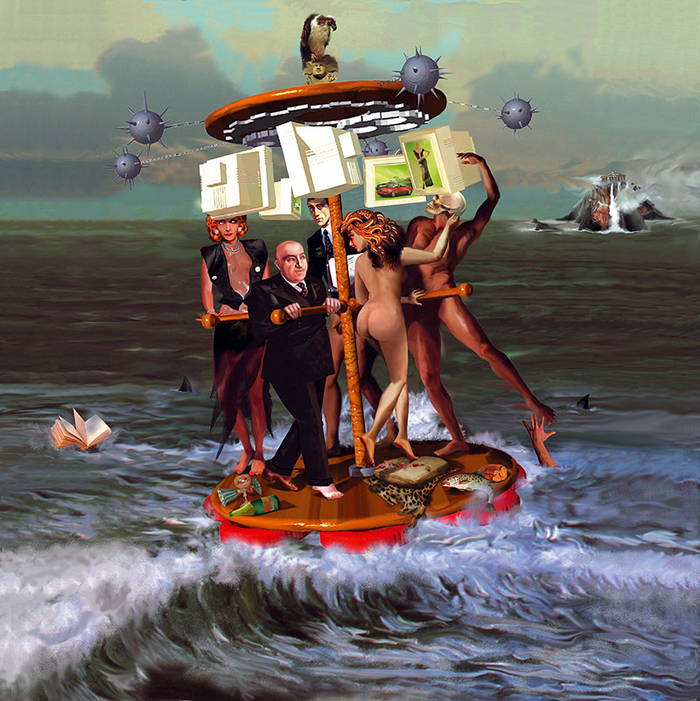Introduction to An Institutional Analysis of Modern Consumption

“The damned” by Lorenzo Paolini, depicting consumerism and the barbarization of modern culture, metaphorically. “Jailed where they think to freely run, they can’t stop because a delay means death.” (Caption quote from Paolini, Wikimedia, CC0 1.0)
Who are we and what do we want?
One of the more notorious elements of the neoclassical perspective in economics is its treatment of people as isolated, self-interested individuals. These ‘economic agents’ are endowed with their own personal ‘utility functions’ and de gustibus non est disputandum: tastes are simply a matter of personal preference. The choices we make, then, are nothing more than the manifestation of our tastes as we calculate the most satisfaction we can get from our scarce resources–most importantly, our money, which we begrudgingly acquire through work.
Pause for a moment to think about the following questions: what does it mean to be human? What is our atomistic approach to utility maximizing agents saying about human nature? And finally, does this offer a complete explanation of why we consume the things we consume (and often times aspire to consume more in the future)?
Chapter Objectives
In this chapter, you will learn about
- Institutional Analysis
- Conspicuous Consumption
- The Complex World of Modern Consumption
The ‘hedonistic man’ (or homo economicus) of neoclassical economics is, as institutional economist Thorstein Veblen observed,
a lightning calculator of pleasures and pains, who oscillates like a homogeneous globule of desire of happiness under the impulse of stimuli that shift him about the area, but leave him intact. He has neither antecedent nor consequent. … The hedonistic man is not a prime mover. He is not the seat of a process of living…
In point of fact, however, it seems obvious that
- People do behave deliberately and consciously, in ways that affect the world around them – that is, they are prime movers, not simply reacting to external changes.
- People change, they develop, in ways that cannot simply be construed as reallocations of scarce resources – that is, people have antecedents (where they came from) and consequents (where they’re going).
And, perhaps most importantly, people are social. Homo sapiens is a species that, unlike say lumbricus terrestris (earthworms), must live in groups. This fact has been long recognized. Take, for instance, Aristotle:
Man is by nature a social animal; an individual who is unsocial naturally and not accidentally is either beneath our notice or more than human. Society is something that precedes the individual. Anyone who either cannot lead the common life or is so self-sufficient as not to need to, and therefore does not partake of society, is either a beast or a god.
While human societies are made up of individuals, any given individual must come out of a society which existed before she did. This would suggest that our approach to understanding individual behavior should start with an understanding of society, not the other way around. In this chapter you will be introduced to an alternative, heterodox analysis along these lines: the institutional approach; and you will explore the new insights that this analysis brings to the study of consumption in modern economies.
